Chuyển sang chế độ ngoại tuyến với ứng dụng Player FM !
10 Types of Synesthesia (Examples, Causes, and Symptoms)
Series đã xóa ("Feed không hoạt động" status)
When?
This feed was archived on February 19, 2024 00:56 (
Why? Feed không hoạt động status. Server của chúng tôi không thể lấy được feed hoạt động của podcast trong một khoảng thời gian.
What now? You might be able to find a more up-to-date version using the search function. This series will no longer be checked for updates. If you believe this to be in error, please check if the publisher's feed link below is valid and contact support to request the feed be restored or if you have any other concerns about this.
Manage episode 294550325 series 1375140
 With so many types of synesthesia out there, it can be hard to understand exactly what it is.
With so many types of synesthesia out there, it can be hard to understand exactly what it is.
That’s why it’s important to look at the word itself first:
It shares a root with anesthesia. This word means “no sensation.”
“Syn” means that something is joined or coupled together. Thus, synesthesia means the joining or coupling of two or more sensations.
And because many different kinds of sensations can be joined, that’s why there are so many synesthesia types.
On this page, we’ll go through the definitions of each one. You’ll discover specific examples and interesting tidbits from scientific research.
That way, you can leave with the fullest possible understanding of this condition. You might even be able to invoke it too using a resource I’ll share below.
Let’s get started.
The 10 Types of Synesthesia (with Examples, Causes, and Symptoms)
In his book on the topic, neurologist Richard E. Cytowic states that approximately 4% of the population experience some form of synesthesia.
Exactly how long people experience their synesthesia is unknown, but many seem to drift in and out of it.
In Wednesday Is Indigo Blue: Discovering the Brain of Synesthesia, Cytowic and his co-authors David Eagleman and Dmitri Nabokov found that evolutionary pressures may shape when and for how long a synesthesia condition affects people.
The condition also tends to be unidirectional. As they point out, a person might experience the letter J as blue. However, seeing blue does not cause them to think about the letter J or experience “J-ness.”
Most forms of synesthesia belong roughly to what some people call “Projection Synesthesia.” That is, something in the brain causes their minds to project senses that aren’t there for the rest of us. Often they tend to involve colors.
So with these aspects in mind, let’s dig into as many types of synesthesia as we can.
One: Colored Days of the Week
Here’s how Daniel Tammet discusses his birthday:
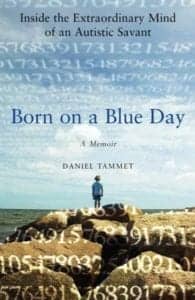
“I was born on January 31, 1979 — a Wednesday. I know it was a Wednesday, because the date is blue in my mind and Wednesdays are always blue.”
In his book, Born on a Blue Day: A Memoir of Aspergers and an Extraordinary Mind, Tamet says that Tuesday is a “warm color” and Thursday is “fuzzy.”
This lack of specificity for some days of the week should remind us of the consistency issue raised by Cytowic. Or it’s possible that some days have substances for Tamet rather than colors.
Is this the same as associating numbers with colors. Not necessarily. For that we need to learn more about our next type.
Two: Grapheme Color Synesthesia
When you see or think about the letter “A,” does it have a color? For some people it does. Likewise with numbers.
Some people will read letters and numbers and see them as colors. Others with grapheme color synesthesia will see letters and numbers as black marks on white paper but think about them as colors.
In The Frog Who Croaked Blue: Synesthesia and the Mixing of the Senses, Jamie Ward gives a list of letter-color associations from two research participants.

It is interesting that different people experience these letters in different ways. This suggests just as much nurture in the development of this form of synesthesia as nature.
Three: Chromesthesia
Chromesthesia, or colored hearing, means that the individual experiences colors connected with sounds.
Researchers have found that sounds can trigger more than colors as well. A person with this condition might hear music and experience shapes, landscapes or textures.
Composers who may have drawn upon this type of synesthesia include Franz Liszt and Jean Sibelius.
Four: Ordinal Linguistic Personification
In this manifestation of synesthesia, the individual will experience numbers, days, months and multiple kinds of words and things as if they were people.
For example, the word “camping” might be experienced as having a gender and a tendency towards grumpiness. A stick on the street might seem to the individual as a happy young man.

In many ways, this synesthesia condition is a lot like how kids play with objects to keep themselves entertained.
Five: Mirror Touch
Imagine you see two people across the street shaking hands. But you don’t just see it. You feel it as if you were the one shaking hands. That’s what is meant by Mirror Touch synesthesia.
In a two-year study by Charlotte A. Chun and Jean-Michel Hupé, these researchers found that many kinds of people with synesthesia experience this form. There was no way to predict which kinds of people might have this kind, but they did see some indication that French people were more likely to experience grapheme color synesthesia.
Six: Spatial Sequence Synesthesia
There are at least two parts to Spatial Sequence Synesthesia, sometimes called “Number Form” synesthesia.
First, the person experiences numbers units as having distinct locations. For example, take an organizational unit like a calendar. Instead of thinking of February conceptually as a group of days, the person will experience it bound up with a location, or as if it had the qualities of a location.
Mark Price and Jason Mattingly give an example of calendar drawings in Automaticity in sequence-space synaesthesia.
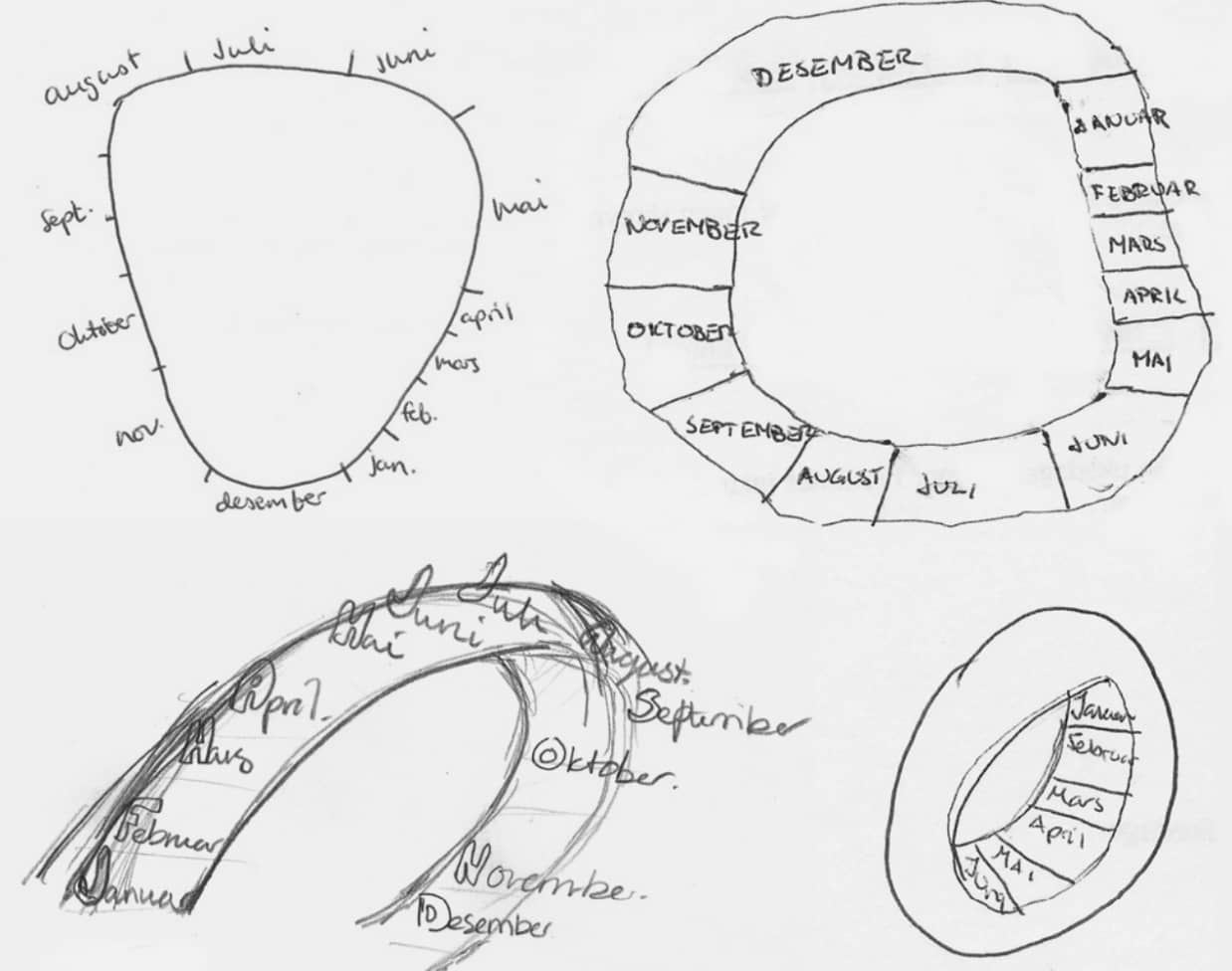
Second, this unit will be experienced with references to other numbers, themselves located in space.
Jamie Ward asked a test participant to draw how she was experiencing Spatial Sequence Synesthesia.
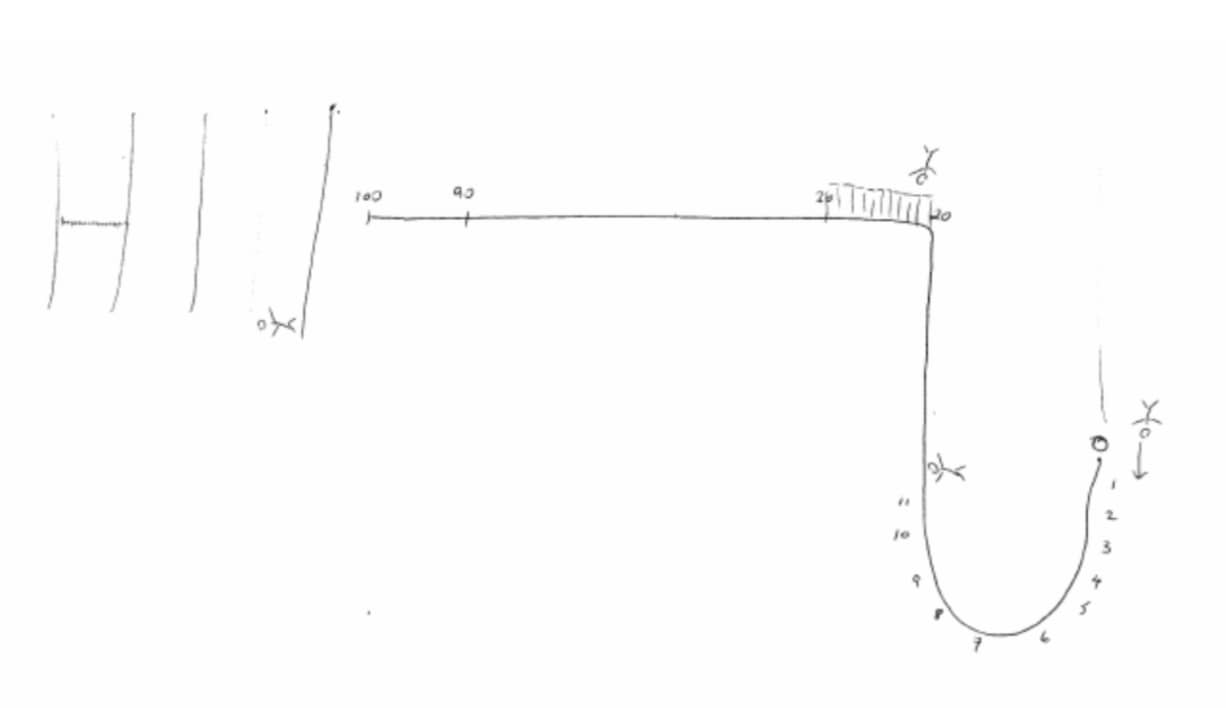
As you can see, the participant not only has the numbers represented where they appear in space. She has indicated how she can rotate her point of view around their location.
Another point:
Part of experiencing this form of the condition might mean that people experience numbers “floating in space at a fixed distance from their body.”
Seven: Auditory-Tactile Synesthesia
Also called “Sound-Touch Synesthesia,” this form of the condition means that common sounds create physical sensations in the listener. These are typically described as “tingling” and may be intense enough to deeply disturb the individual.
Studies in people with thalamic lesions have shown that this part of the brain might be responsible for both physical and sound sensations. This area of knowledge is one place where knowing how to remember the cranial nerves could also be helpful because they contribute to some of our ability to perceive physical and auditory sensations.
Eight: Lexical-Gustatory Synesthesia
Imagine tasting the words of this article as you read it.
That’s exactly what would be happening to you now if you had lexical-gustatory synesthesia.
Researchers have found that amongst the few people who experience this condition, the experience is very intense but lacking in quality. Brain scans show that the parts of the brain involved in emotions light up, which may explain the magnitude of these experiences.
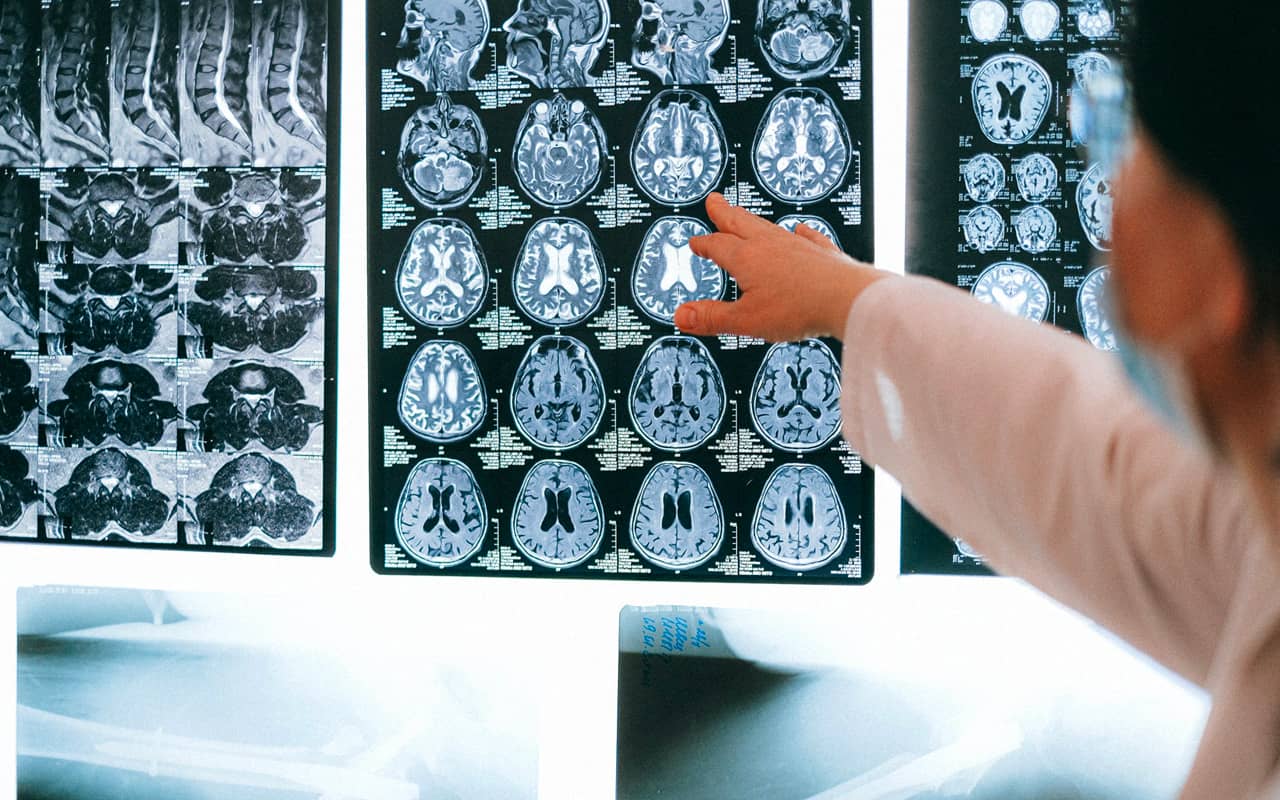
Sound-gustatory is much the same. However, in this case, the sense of taste is triggered by noises and auditory modulations in the person’s environment.
We’ve talked about taste. What about smelling colors?
This too is something that happens to people with synesthesia, but seems much less common than some of the other types.
Although subjective feelings are involved in each of these, it’s hard to say if any of them amount to emotional synesthesia as a type on its own. More research needs to be done, some of which is being uncovered by those investigating our next type.
Nine: Misophonia Synesthesia
People with misophonia can be triggered to rage by everyday sounds.
Researchers have not been able to find out much about it. Some conclude that many people fail to report their symptoms for fear of being stigmatized.
On the opposite end of the spectrum, ASMR has been all the rage over the past few years. Videos featuring all kinds of mundane sounds of racked up millions, if not billions of views on YouTube hoping to induce “auto sensory meridian response.”
These are pleasant tingling sensations that come from listening to sounds like whispering voices, tapping, blowing bubbles or chewing gum.
Ten: Ideaesthesia
Of these two images, which would you name Booba and which Kiki?
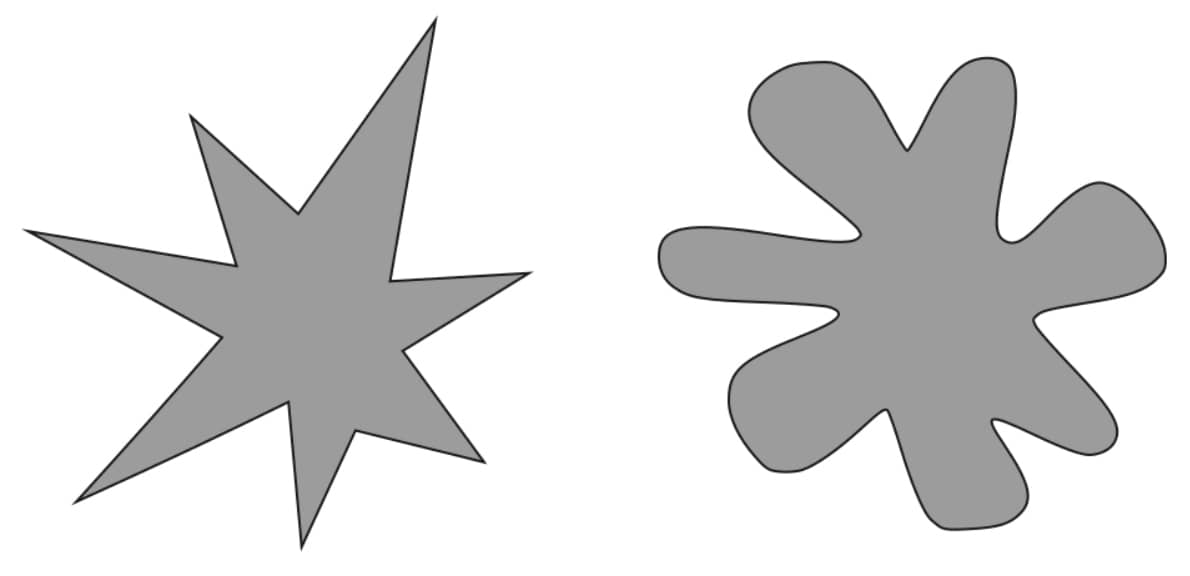
Most native English speakers will name the image on the left Kiki and the image on the right Booba.
Why?
Because hard-K sounds are conceived as being similar to sharp angles. Softer B-sounds are generally perceived as more like the rounded drawing to the right. According to Derren Bridger, marketers have long known about this tendency and used it to help dream up product names.
Much more research needs to be done on this branch of synesthesia. It’s not yet clear if colors are also involved in how people might experience these conceptual approaches to linking sounds with shapes in a conceptual way.
Can You Give Yourself Synesthesia?
I don’t think so. And I hope you never harm your brain or develop a lesion that might come with unwanted effects just to experience synesthesia.
However, you certainly can increase your ability to experience the world in a multi sensory way.
To give this a try for yourself, go through this hyperphantasia guided meditation:
https://www.youtube.com/watch?v=uAz3_pkqXqc
In the meantime, I hope this rundown of the many different types of synesthesia helped you out.
If there are any I missed, please pop them into the discussion area so we can all learn about them. And if you’d like to be able to memorize all of these different terms we discussed today, check out my FREE Memory Improvement Kit today:
484 tập
Series đã xóa ("Feed không hoạt động" status)
When?
This feed was archived on February 19, 2024 00:56 (
Why? Feed không hoạt động status. Server của chúng tôi không thể lấy được feed hoạt động của podcast trong một khoảng thời gian.
What now? You might be able to find a more up-to-date version using the search function. This series will no longer be checked for updates. If you believe this to be in error, please check if the publisher's feed link below is valid and contact support to request the feed be restored or if you have any other concerns about this.
Manage episode 294550325 series 1375140
 With so many types of synesthesia out there, it can be hard to understand exactly what it is.
With so many types of synesthesia out there, it can be hard to understand exactly what it is.
That’s why it’s important to look at the word itself first:
It shares a root with anesthesia. This word means “no sensation.”
“Syn” means that something is joined or coupled together. Thus, synesthesia means the joining or coupling of two or more sensations.
And because many different kinds of sensations can be joined, that’s why there are so many synesthesia types.
On this page, we’ll go through the definitions of each one. You’ll discover specific examples and interesting tidbits from scientific research.
That way, you can leave with the fullest possible understanding of this condition. You might even be able to invoke it too using a resource I’ll share below.
Let’s get started.
The 10 Types of Synesthesia (with Examples, Causes, and Symptoms)
In his book on the topic, neurologist Richard E. Cytowic states that approximately 4% of the population experience some form of synesthesia.
Exactly how long people experience their synesthesia is unknown, but many seem to drift in and out of it.
In Wednesday Is Indigo Blue: Discovering the Brain of Synesthesia, Cytowic and his co-authors David Eagleman and Dmitri Nabokov found that evolutionary pressures may shape when and for how long a synesthesia condition affects people.
The condition also tends to be unidirectional. As they point out, a person might experience the letter J as blue. However, seeing blue does not cause them to think about the letter J or experience “J-ness.”
Most forms of synesthesia belong roughly to what some people call “Projection Synesthesia.” That is, something in the brain causes their minds to project senses that aren’t there for the rest of us. Often they tend to involve colors.
So with these aspects in mind, let’s dig into as many types of synesthesia as we can.
One: Colored Days of the Week
Here’s how Daniel Tammet discusses his birthday:

“I was born on January 31, 1979 — a Wednesday. I know it was a Wednesday, because the date is blue in my mind and Wednesdays are always blue.”
In his book, Born on a Blue Day: A Memoir of Aspergers and an Extraordinary Mind, Tamet says that Tuesday is a “warm color” and Thursday is “fuzzy.”
This lack of specificity for some days of the week should remind us of the consistency issue raised by Cytowic. Or it’s possible that some days have substances for Tamet rather than colors.
Is this the same as associating numbers with colors. Not necessarily. For that we need to learn more about our next type.
Two: Grapheme Color Synesthesia
When you see or think about the letter “A,” does it have a color? For some people it does. Likewise with numbers.
Some people will read letters and numbers and see them as colors. Others with grapheme color synesthesia will see letters and numbers as black marks on white paper but think about them as colors.
In The Frog Who Croaked Blue: Synesthesia and the Mixing of the Senses, Jamie Ward gives a list of letter-color associations from two research participants.

It is interesting that different people experience these letters in different ways. This suggests just as much nurture in the development of this form of synesthesia as nature.
Three: Chromesthesia
Chromesthesia, or colored hearing, means that the individual experiences colors connected with sounds.
Researchers have found that sounds can trigger more than colors as well. A person with this condition might hear music and experience shapes, landscapes or textures.
Composers who may have drawn upon this type of synesthesia include Franz Liszt and Jean Sibelius.
Four: Ordinal Linguistic Personification
In this manifestation of synesthesia, the individual will experience numbers, days, months and multiple kinds of words and things as if they were people.
For example, the word “camping” might be experienced as having a gender and a tendency towards grumpiness. A stick on the street might seem to the individual as a happy young man.

In many ways, this synesthesia condition is a lot like how kids play with objects to keep themselves entertained.
Five: Mirror Touch
Imagine you see two people across the street shaking hands. But you don’t just see it. You feel it as if you were the one shaking hands. That’s what is meant by Mirror Touch synesthesia.
In a two-year study by Charlotte A. Chun and Jean-Michel Hupé, these researchers found that many kinds of people with synesthesia experience this form. There was no way to predict which kinds of people might have this kind, but they did see some indication that French people were more likely to experience grapheme color synesthesia.
Six: Spatial Sequence Synesthesia
There are at least two parts to Spatial Sequence Synesthesia, sometimes called “Number Form” synesthesia.
First, the person experiences numbers units as having distinct locations. For example, take an organizational unit like a calendar. Instead of thinking of February conceptually as a group of days, the person will experience it bound up with a location, or as if it had the qualities of a location.
Mark Price and Jason Mattingly give an example of calendar drawings in Automaticity in sequence-space synaesthesia.

Second, this unit will be experienced with references to other numbers, themselves located in space.
Jamie Ward asked a test participant to draw how she was experiencing Spatial Sequence Synesthesia.

As you can see, the participant not only has the numbers represented where they appear in space. She has indicated how she can rotate her point of view around their location.
Another point:
Part of experiencing this form of the condition might mean that people experience numbers “floating in space at a fixed distance from their body.”
Seven: Auditory-Tactile Synesthesia
Also called “Sound-Touch Synesthesia,” this form of the condition means that common sounds create physical sensations in the listener. These are typically described as “tingling” and may be intense enough to deeply disturb the individual.
Studies in people with thalamic lesions have shown that this part of the brain might be responsible for both physical and sound sensations. This area of knowledge is one place where knowing how to remember the cranial nerves could also be helpful because they contribute to some of our ability to perceive physical and auditory sensations.
Eight: Lexical-Gustatory Synesthesia
Imagine tasting the words of this article as you read it.
That’s exactly what would be happening to you now if you had lexical-gustatory synesthesia.
Researchers have found that amongst the few people who experience this condition, the experience is very intense but lacking in quality. Brain scans show that the parts of the brain involved in emotions light up, which may explain the magnitude of these experiences.

Sound-gustatory is much the same. However, in this case, the sense of taste is triggered by noises and auditory modulations in the person’s environment.
We’ve talked about taste. What about smelling colors?
This too is something that happens to people with synesthesia, but seems much less common than some of the other types.
Although subjective feelings are involved in each of these, it’s hard to say if any of them amount to emotional synesthesia as a type on its own. More research needs to be done, some of which is being uncovered by those investigating our next type.
Nine: Misophonia Synesthesia
People with misophonia can be triggered to rage by everyday sounds.
Researchers have not been able to find out much about it. Some conclude that many people fail to report their symptoms for fear of being stigmatized.
On the opposite end of the spectrum, ASMR has been all the rage over the past few years. Videos featuring all kinds of mundane sounds of racked up millions, if not billions of views on YouTube hoping to induce “auto sensory meridian response.”
These are pleasant tingling sensations that come from listening to sounds like whispering voices, tapping, blowing bubbles or chewing gum.
Ten: Ideaesthesia
Of these two images, which would you name Booba and which Kiki?

Most native English speakers will name the image on the left Kiki and the image on the right Booba.
Why?
Because hard-K sounds are conceived as being similar to sharp angles. Softer B-sounds are generally perceived as more like the rounded drawing to the right. According to Derren Bridger, marketers have long known about this tendency and used it to help dream up product names.
Much more research needs to be done on this branch of synesthesia. It’s not yet clear if colors are also involved in how people might experience these conceptual approaches to linking sounds with shapes in a conceptual way.
Can You Give Yourself Synesthesia?
I don’t think so. And I hope you never harm your brain or develop a lesion that might come with unwanted effects just to experience synesthesia.
However, you certainly can increase your ability to experience the world in a multi sensory way.
To give this a try for yourself, go through this hyperphantasia guided meditation:
https://www.youtube.com/watch?v=uAz3_pkqXqc
In the meantime, I hope this rundown of the many different types of synesthesia helped you out.
If there are any I missed, please pop them into the discussion area so we can all learn about them. And if you’d like to be able to memorize all of these different terms we discussed today, check out my FREE Memory Improvement Kit today:
484 tập
كل الحلقات
×Chào mừng bạn đến với Player FM!
Player FM đang quét trang web để tìm các podcast chất lượng cao cho bạn thưởng thức ngay bây giờ. Đây là ứng dụng podcast tốt nhất và hoạt động trên Android, iPhone và web. Đăng ký để đồng bộ các theo dõi trên tất cả thiết bị.





